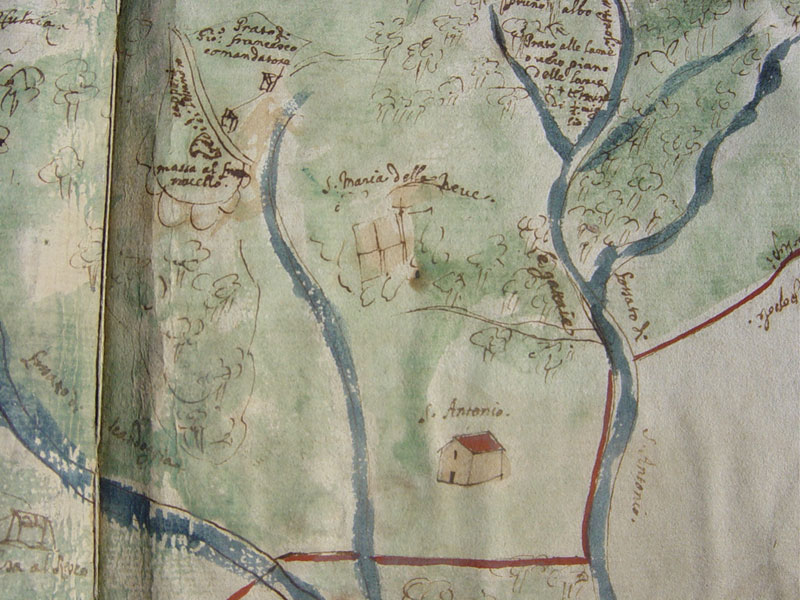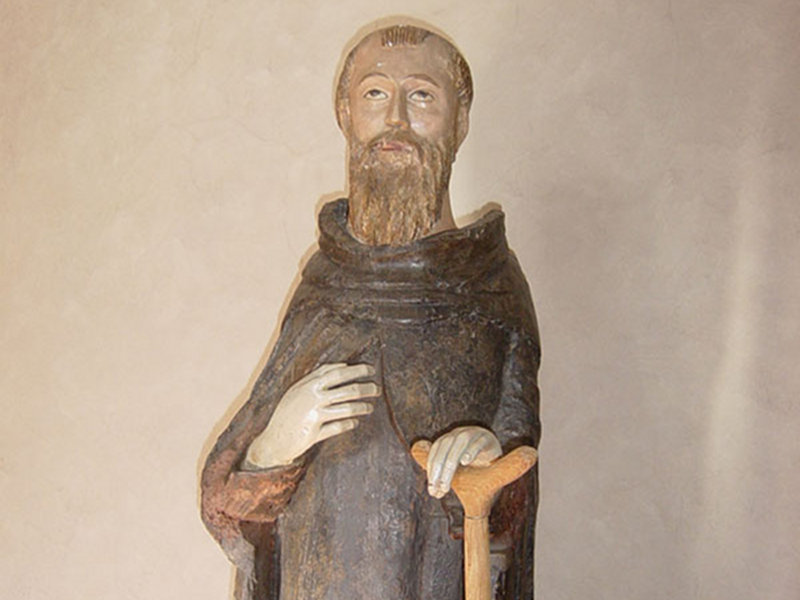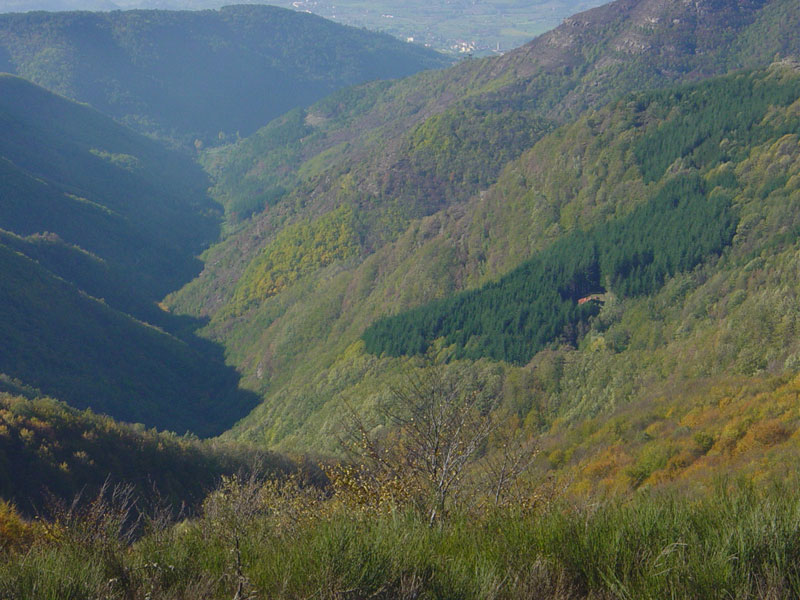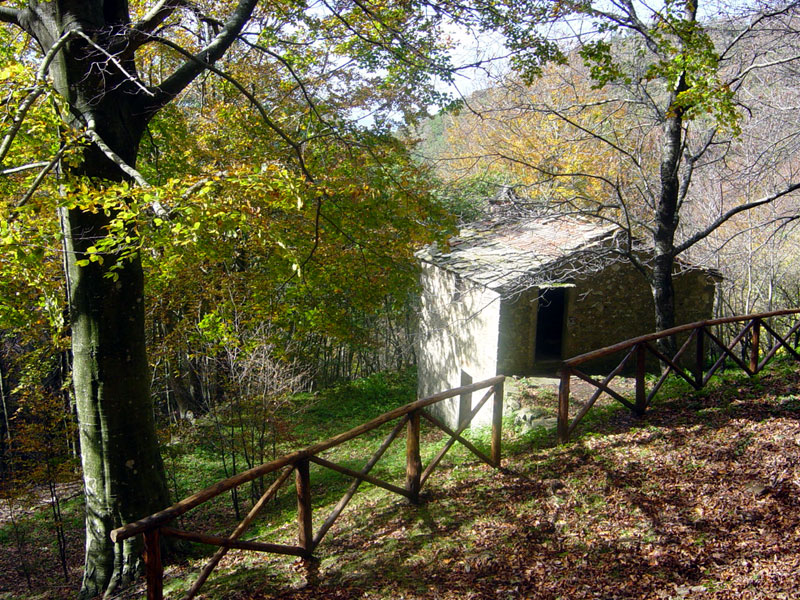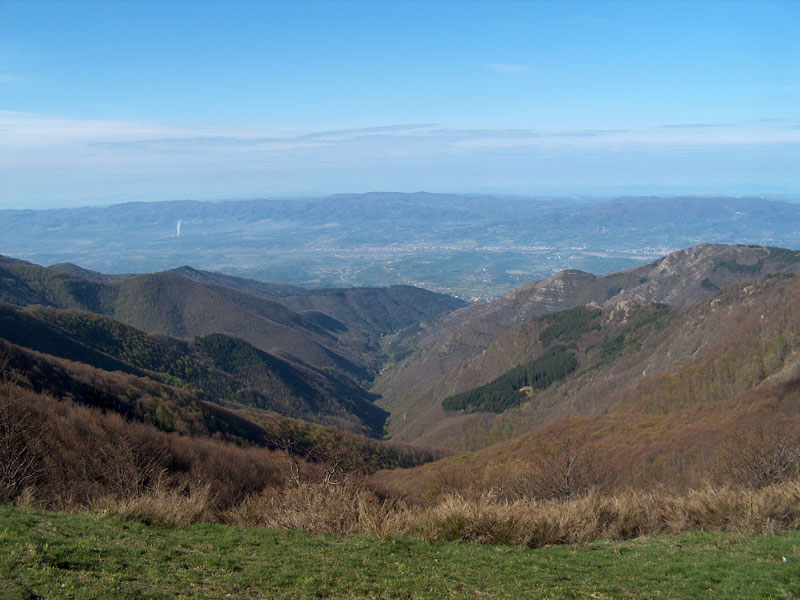Points of Interest
Historical Outline
S.Antonio Forest does not have a well-defined history it can
exclusively refer to. Part of the land forming today the protected
area, together with the lands of Vallombrosa, were given around the
year 1000 by noble families - among which Earls Guidi, Adimari and the
monastery of S.Ilario in Fiano (S.Ellero, Reggello) - to the monks of
Vallombrosa. The latter, with Giovanni Gualberto, founded in
Vallombrosa in 1039 the monastic order of the Benedictine monks. For
this reason, the silvicultural and historical events of this forest
have followed the events of the largest complex they belonged to: the
forest of Vallombrosa, managed by the monks. The area was dominated by
"Turkey Oaks and other trees" and "Beeches", as we can infer from the
deed of gift made by the abbess of St.Ilario to the monks of
Vallombrosa.
In 1586 the monks created a forest land register
containing more precise information on the land which will subsequently
form the forest of "S.Antonio". The oak woods are described as mixed
formations of Turkey Oaks and Downy Oaks growing together with Chestnut
Trees, Ash Trees, and Hornbeams and, at higher altitudes, Beeches.
Without a doubt, the chestnut tree was very widespread given its
importance in the diet of both men and animals; moreover, the
prevalence of coppice trees provided the poles that were used to
support vineyards. The beeches, above the 1,000 meters, formed pure
beech woods, presumably not so thick and uniform as the present ones,
considering the intense cattle breeding of that time and the need to
use large clearings to cultivate potatoes, rye, and wheat.
The Fir
Tree was not very widespread; however, when in the second half of the
17th century this wood became object of an important trade, the monks
began to extend its cultivation, above all in the northern section of
the forest of Vallombrosa.
The section of S.Antonio, where broadleaf
trees dominated, was neglected and the beech woods forgotten, probably
also due to the prohibition by the Grand Duke of Tuscany to "cut in the
mile within the mountains ridge". When in 1789 the Grand Duke ordered
the census of all the properties owned by the monasteries, the forest
owned by the abbey of Vallombrosa, including the place known as Balze
di S.Antonio, covering about 198 ha, reached the 840 hectares and were
characterized by the following formations:
Woodlands owned by the monks of Vallombrosa in 1789:
|
||||||||||||||||||
| In
1860, Tuscany was annexed to the Kingdom of Sardinia and with the
enforcement of the laws of Savoia the properties of the monks of
Vallombrosa, including the forest, were transferred to the State
Property General Directorate, with the creation of the first forest
State properties which were subsequently declared inalienable. The
improvement measures favoring the Silver Fir high forests and, at the
same time, the introduction of Spruce Fir, Larch, Scots Pine, and
Austrian Pine date back to this period. The strong demand of timber during the First and Second World Wars led to continuous low-level cuts in the forest, above all in the Fir Tree, Beech, and Chestnut Tree woods. After the destruction caused by the war, in the years 43/44 two violent fires almost completely destroyed 154 ha of coppice beech woods in the section of S.Antonio. The subsequent reforestation activities promoted the increase in artificial conifer woods to the detriment of spontaneous broadleaf tree formations. In this situation, the forest of S.Antonio stood out because it maintained a more naturalistic silviculture formed by about 198 hectares of coppice beeches, belonging to the ancient state property, plus 770 hectares of other coppice and shrubby woods purchased by the State in the 60s, for a total of 975 ha. In 1975 the whole forest of S.Antonio, covering 1059.25.34 ha, was given by the State to Regione Toscana, definitively separating from Vallombrosa and becoming a regional state forest. In 1977 it passed again to the Mountain Community Pratomagno, a local authority whose functions include the enhancement and management of the regional state heritage. |


